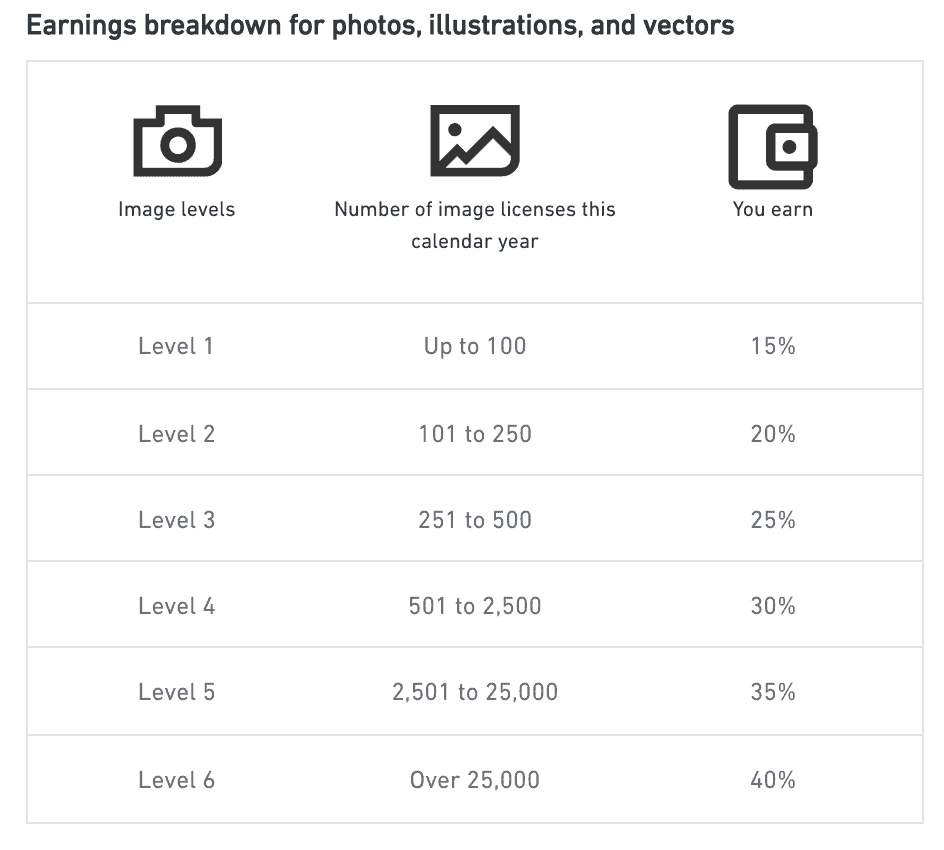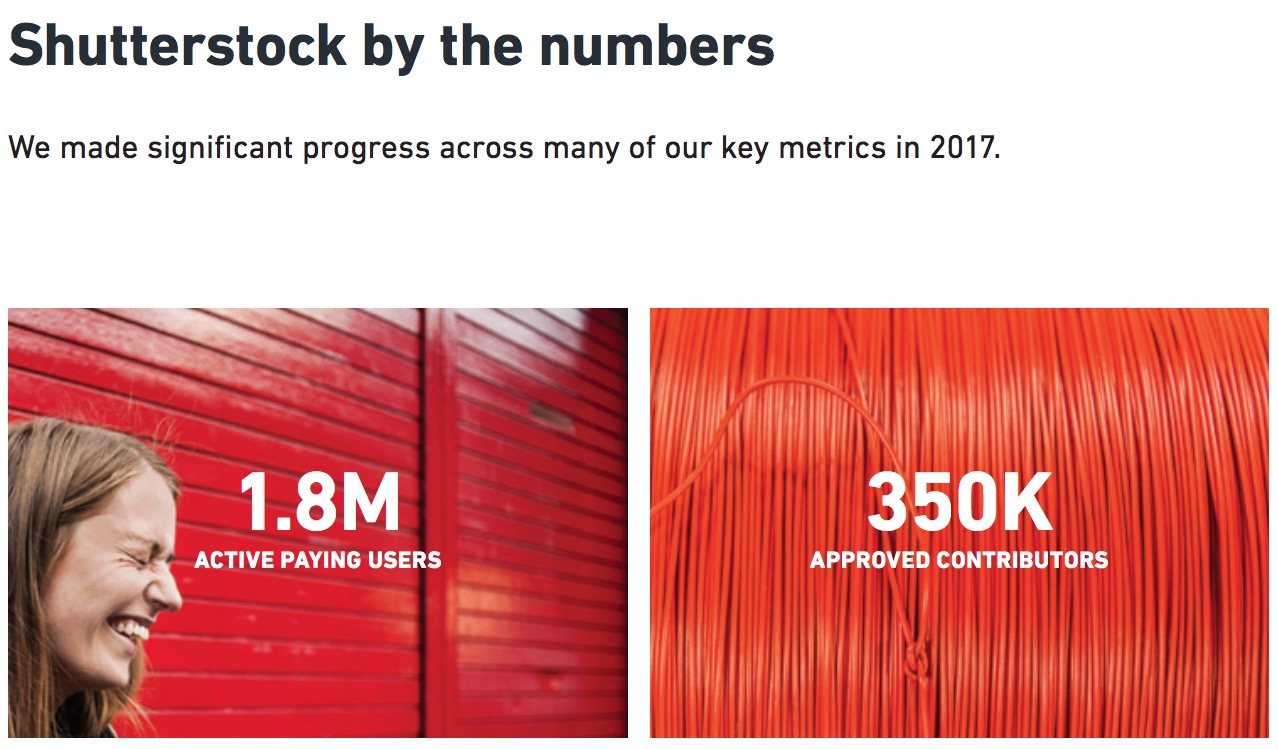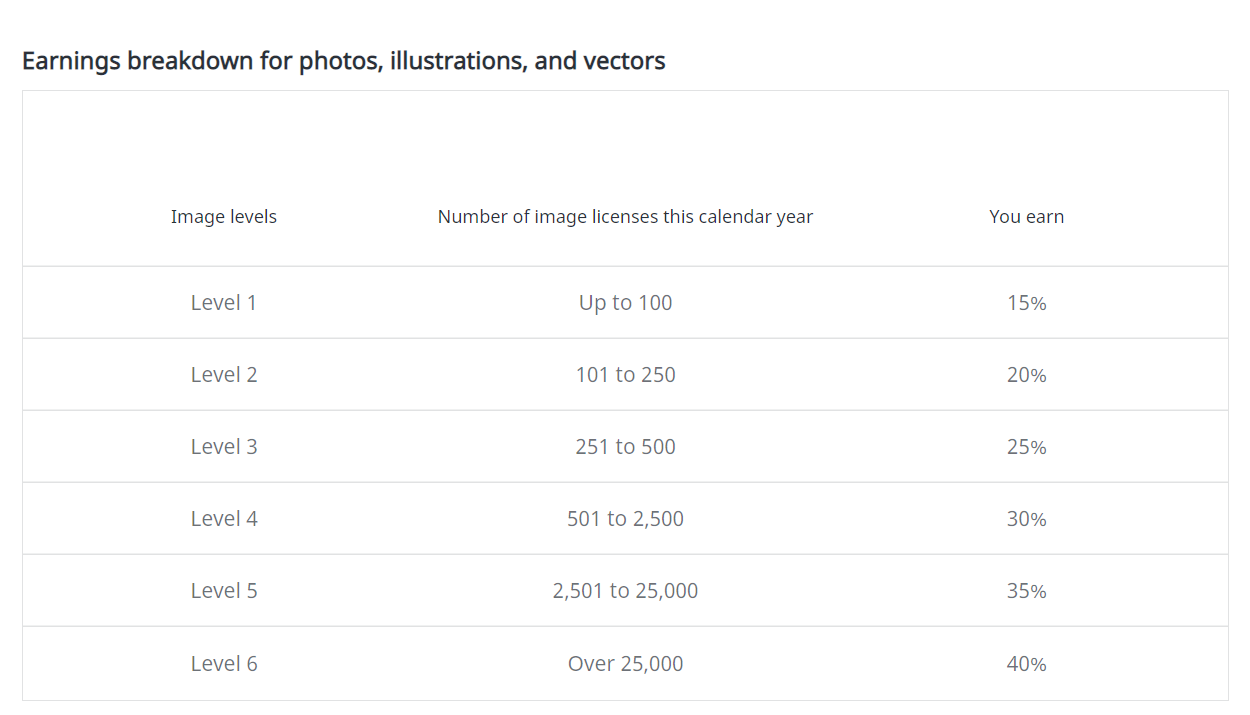If you’re passionate about photography and thinking about turning your hobby into a source of income, Shutterstock might be a platform worth exploring. As a contributor, you have the chance to earn money whenever someone downloads your photos. But how exactly does that work? Understanding how Shutterstock pays its contributors can help you set realistic expectations and optimize your earning potential. In this post, we’ll break down the basics of contributor earnings and how the payment system operates, so you’re ready to start your journey on the right foot.
How Shutterstock Pays Contributors for Photos

Shutterstock has a straightforward payment structure, but it can seem a bit complex at first glance. Essentially, your earnings depend on several factors, including your contributor level, the type of license purchased, and your overall sales performance. Here’s how it works:
- Royalty Rates: Shutterstock offers a tiered royalty system based on your lifetime earnings. New contributors start at a standard rate, and as you make more sales, you can qualify for higher payout tiers, which increase your earnings per download.
- License Types: Shutterstock primarily sells two types of licenses:
- Standard License: For most personal and commercial uses, earning you a set royalty rate.
- Enhanced License: For larger-scale or high-volume use, which pays higher royalties.
- Payment Threshold: You need to reach a minimum payout amount (usually $35) before you can withdraw your earnings. Once you hit that threshold, payments are typically processed via PayPal, Skrill, or bank transfer, depending on your preferences.
- Payment Schedule: Shutterstock processes payments monthly. Usually, earnings are paid out around the 15th of each month for the previous month’s sales.
Additionally, factors like your contributor level can influence your royalty percentage. For example, higher-tier contributors often enjoy higher royalty rates, incentivizing consistent quality uploads and sales. Keep in mind, your total earnings will be a combination of the number of downloads and the license type purchased. The more popular and in-demand your images are, the more you stand to earn.
Understanding these basics can help you strategize your uploads and marketing efforts to maximize your payout potential. Remember, building a strong portfolio and consistently uploading high-quality images are key ingredients to increasing your earnings on Shutterstock.
Factors Influencing Shutterstock Contributor Payments

When it comes to earning money as a Shutterstock contributor, there’s no one-size-fits-all answer. Your payments can vary widely depending on several key factors. Let’s break down what really influences how much you make per photo:
License Type
Shutterstock offers different types of licenses—Standard and Enhanced. Standard licenses are more common and generally pay less, while Enhanced licenses are more expensive for buyers and, in turn, can earn you higher royalties. If you’re uploading images that are more likely to be licensed for commercial purposes—like business use, product packaging, or advertising—aim for those that qualify for Enhanced licenses. This can significantly boost your earnings per download.
Contributor Level and Portfolio Quality
Shutterstock rewards contributors who consistently upload high-quality, popular images. As your portfolio grows and your images receive more downloads, your contributor level increases—from Standard to Platinum or even Exclusive tiers. Higher levels often come with better royalty rates, meaning you earn more per download. So, focusing on creating top-notch, relevant images can help you climb the ladder and increase your earnings.
Download Volume
It’s pretty straightforward: the more your images are downloaded, the more money you make. But it’s not just about quantity—quality matters too. Popular images that meet current trends or niche demands tend to get more attention and downloads, translating into higher earnings. Promoting your portfolio and tagging your images well can also help boost download numbers.
Exclusive vs. Non-Exclusive Content
If you choose to be an exclusive contributor, agreeing not to sell your images elsewhere, Shutterstock often offers higher royalty rates. Non-exclusive contributors can sell their images on multiple platforms, which is flexible but might mean earning slightly less per download. Consider your overall strategy and how much effort you want to put into exclusivity versus wider distribution.
Market Trends and Demand
Finally, market trends play a role. During certain times—like holidays, back-to-school season, or major events—specific types of images see an increase in demand. Creating timely, relevant content can lead to more downloads and, consequently, higher earnings. Staying updated with current trends and adjusting your portfolio accordingly can make a noticeable difference.
Average Earnings per Photo on Shutterstock

So, what’s the typical earning per photo on Shutterstock? The truth is, it varies a lot depending on all the factors we just discussed. However, to give you a general idea, here’s what most contributors can expect:
| Contributor Level | Approximate Earnings per Download |
|---|---|
| Standard Contributor | $0.25 – $0.50 |
| Elite Contributor | $0.50 – $1.00 |
| Exclusive Contributor | $0.50 – $2.00 |
Keep in mind that these are rough estimates. Your actual earnings per photo can be lower or higher based on the license type, image quality, and how popular your photos become. For example, a highly sought-after image licensed with an Enhanced license could earn you a couple of dollars or more, especially if it’s part of a trending niche.
On average, many contributors report earning somewhere between $0.25 to $1.00 per download. If you’re just starting out, don’t be discouraged—building a strong portfolio, understanding market demands, and optimizing your images can lead to better earnings over time.
It’s also helpful to remember that earnings accumulate over time. An image that doesn’t get many downloads initially might pick up traction months later, especially if it’s relevant to current events or trends. Patience and persistence are key in this game!
If you’re curious about your potential earnings, consider tracking your downloads and earnings regularly. Over time, you’ll get a clearer picture of what types of images perform best for you and how to optimize your portfolio for maximum income.
Tips to Maximize Your Photography Earnings on Shutterstock
Alright, so you’re eager to boost your income as a Shutterstock contributor? That’s a smart move! The good news is, with a few strategic steps, you can increase your earnings and get more out of your hard work. Let’s dive into some practical tips that can help you make the most of your photography on Shutterstock.
Focus on High-Demand Topics
First things first—pay attention to what buyers are searching for. Shutterstock’s popular categories often include business, technology, health, lifestyle, and travel. By creating images that align with current trends or seasonal demands, you’ll increase your chances of making sales. Keep an eye on Shutterstock’s trending searches and top-selling images for inspiration.
Upload Consistently
Consistency is key! The more quality images you upload, the higher your chances of earning commissions. Set a realistic goal—whether it’s weekly or monthly—and stick to it. Remember, Shutterstock favors contributors who regularly add fresh content, helping you stay visible in search results.
Optimize Your Keywords and Titles
Think of keywords as the map that guides buyers to your images. Use relevant, specific keywords that accurately describe your photos. Avoid keyword stuffing, but don’t be too vague either. Well-crafted titles and descriptions also improve discoverability. Take the time to research trending keywords in your niche to boost your image’s visibility.
Create Unique and High-Quality Content
Quality beats quantity every time. Invest in good equipment, proper lighting, and post-processing to ensure your images look professional. Unique images that stand out are more likely to be purchased. Experiment with different styles and subjects to diversify your portfolio.
Leverage Collections and Curate Your Portfolio
Group similar images into collections or themes. This not only makes your portfolio look more professional but also encourages buyers to explore more of your work. Highlight your best shots and update your portfolio regularly to keep it fresh and appealing.
Engage with the Shutterstock Community
Participate in forums, challenges, or contributor programs. Networking with other photographers can provide valuable insights, feedback, and inspiration. Sometimes, collaborative projects or contests can give your work extra exposure, leading to more sales.
Monitor Your Performance and Adjust
Keep an eye on your dashboard analytics. Which images sell the best? Which keywords are bringing in traffic? Use this data to refine your strategy. Drop underperforming images and focus on creating similar content that resonates with buyers.
By applying these tips, you’ll be well on your way to maximizing your Shutterstock earnings. Remember, persistence and continuous improvement are your best friends in this journey. Happy shooting!
Conclusion and Final Thoughts on Shutterstock Contributor Payments
So, there you have it! Understanding Shutterstock’s payment structure is the first step toward turning your passion for photography into a steady income stream. While the rates may vary depending on your contributor level, image type, and licensing, the key takeaway is that your effort and strategy play significant roles in your earning potential.
It’s important to remember that earning more on Shutterstock isn’t just about getting the most downloads—it’s about consistently uploading high-quality, relevant images and optimizing how your work is presented. As you build your portfolio and learn what works best, you’ll notice your earnings gradually increase.
Also, keep in mind that Shutterstock offers different ways to earn, including royalties from standard and enhanced licenses. Being aware of these options allows you to tailor your content to maximize revenue. Don’t forget to stay updated with Shutterstock’s policies and payment thresholds so you can plan your growth effectively.
In the end, becoming a successful contributor is a mix of creative effort, strategic planning, and patience. Celebrate your progress along the way, learn from feedback, and keep pushing your boundaries. With dedication, you can turn your photography hobby into a rewarding source of income through Shutterstock.
Happy photographing, and here’s to your success as a Shutterstock contributor!

